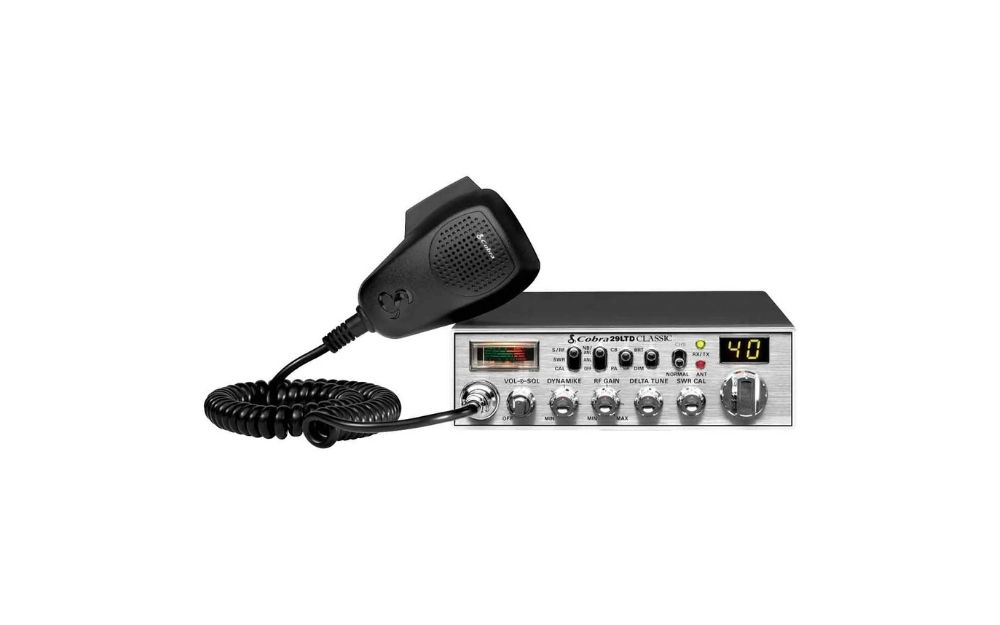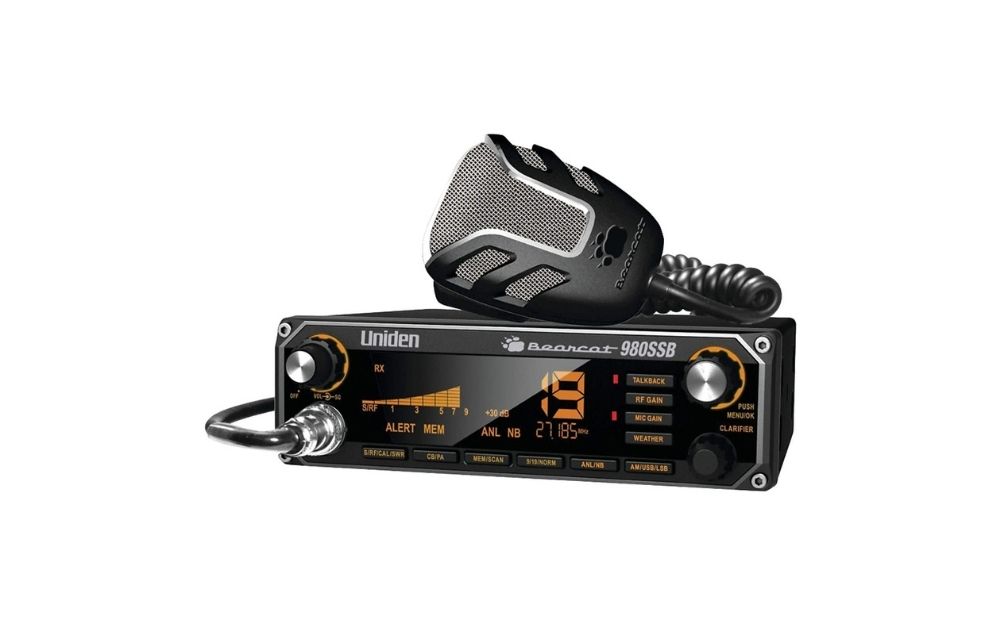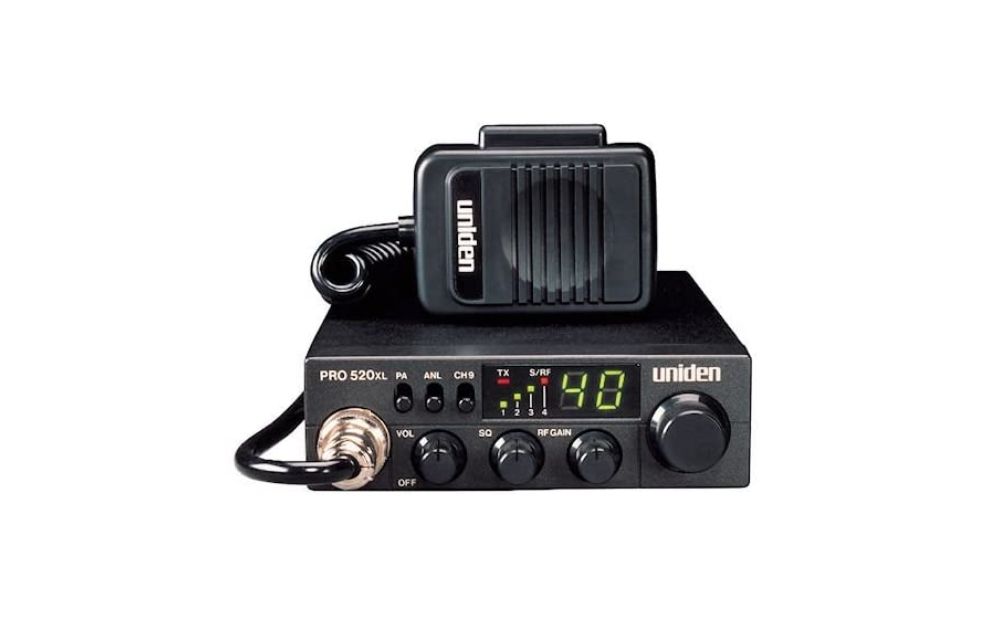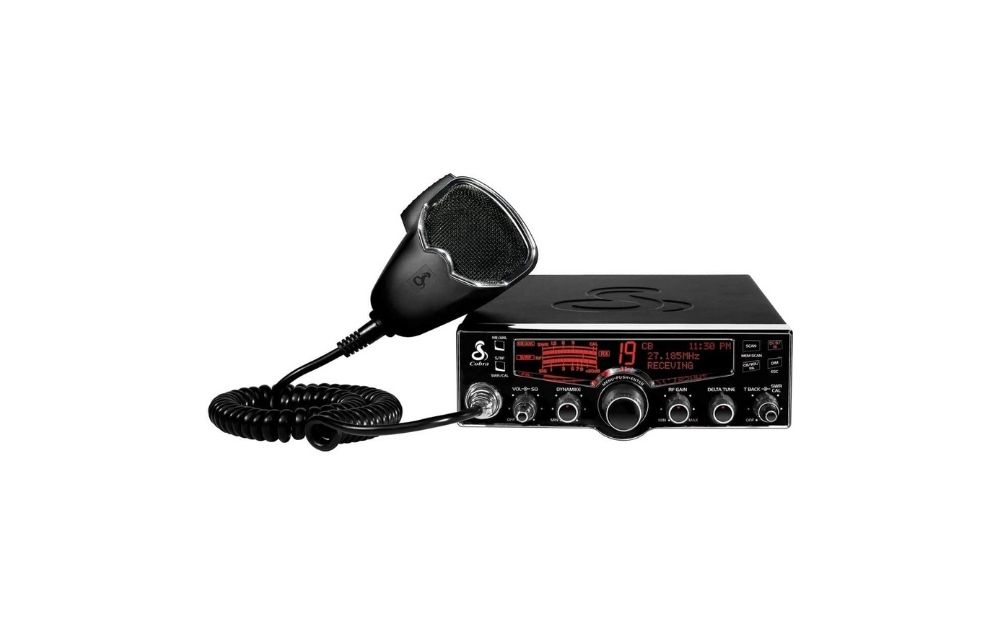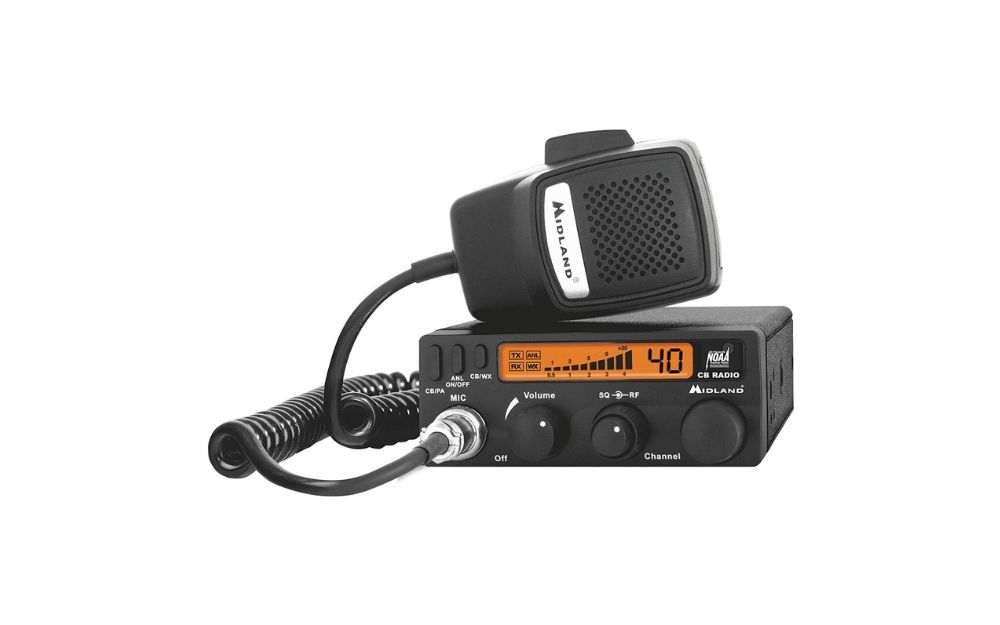Travelers looking to communicate with others and stay in touch for safety will often use Citizens Band or CB Radios.
A CB radio is basically a system of short-distance radio communications, whereby people can speak over long distances using the cord-tethered microphone.
CB radios are best known for their use by truckers, who can communicate with each other, or alert each other of road conditions.
But a good CB radio is for more than truckers. Off roaders, campers and long distance travelers often install them in their vehicles.
CB equipment is also sometimes used in homes, to communicate with others, or in industrial settings.
And some top CB radios have a public address capacity for business use as well.
If you were looking for the best CB radio ever made, what would you be considering as the top features and functionality?
Let’s take a look at our picks for top CB radios, and then walk through the features in a good CB radio.
See Our Top CB Radio Reviews
| # | PREVIEW | Product | |
|---|---|---|---|
| 1 |
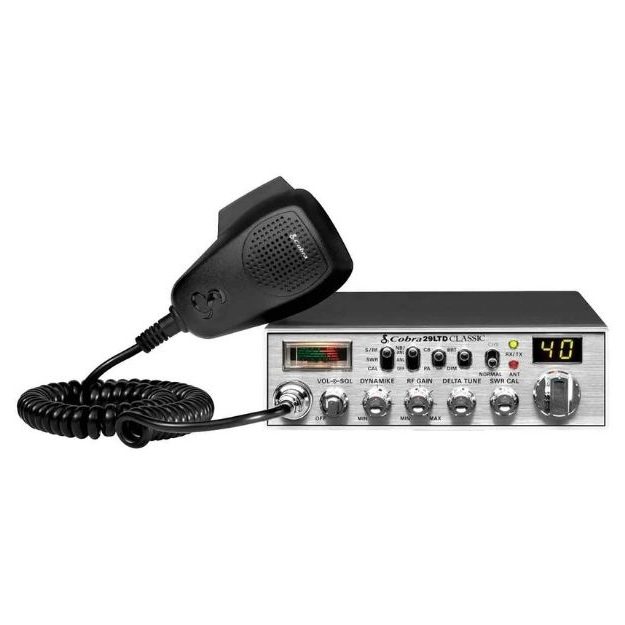
|
|
|
|
|
|||
| 2 |
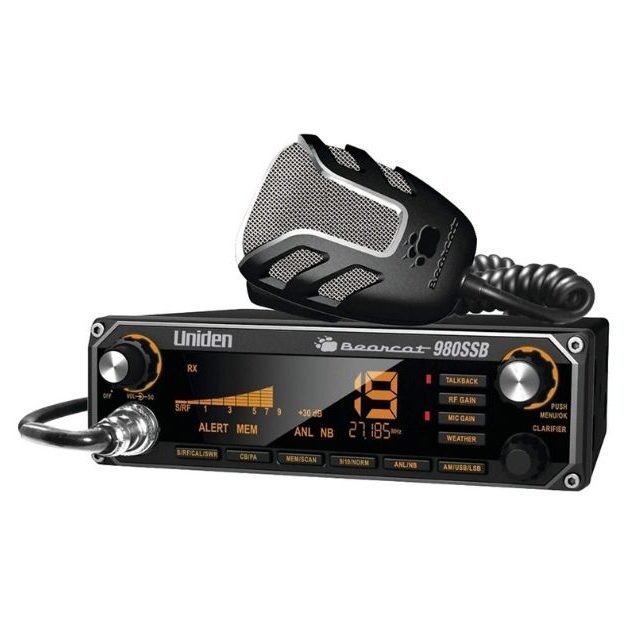
|
|
|
|
|
|||
| 3
Best For Low Budgets
3Uniden PRO520XL Pro CB Radio
|
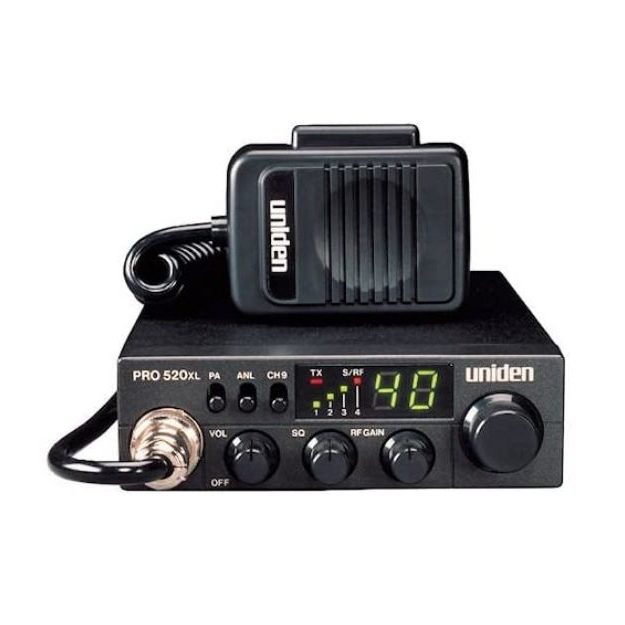
|
|
|
|
|
|||
| 4
Best For Higher Budgets
4Cobra 29LX CB Radio
|
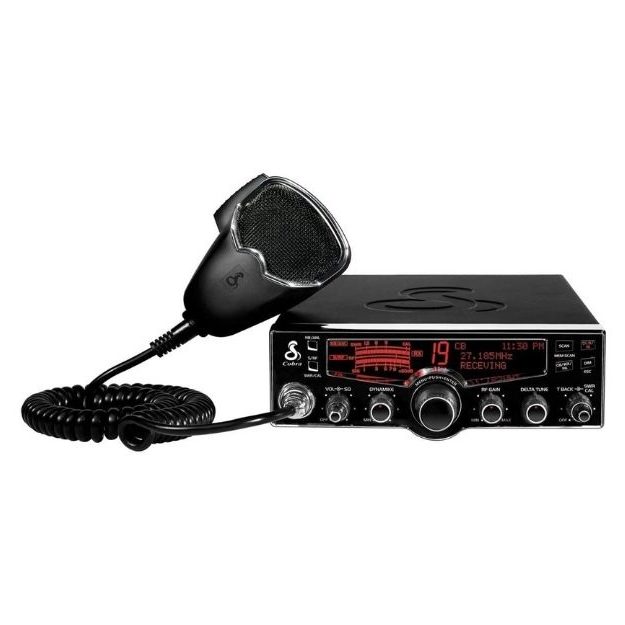
|
|
|
|
|
|||
| 5
Best Overall
5Midland 1001LWX CB Radio
|
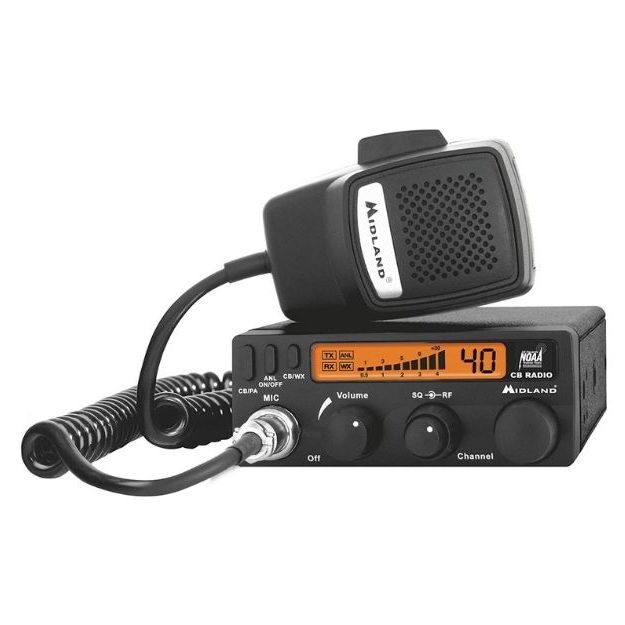
|
|
|
|
|
|||
1. Cobra 29LTD CB Radio
- 4 watt output
- Full range of CB stations
- Dimmer control for nighttime driving
- Comes with DC power cord
This CB radio provides 4 watt-output, giving you the maximum range of communications.
It has 40 channels, allowing you to scan the complete range of CB stations, with instant access to emergency channel 9.
There’s also a warning indicator that notifies you when your antenna needs to be checked. When the light is illuminated, you know you need to make adjustments.
Comes with a nine-foot microphone cord, a DC power cord, a transceiver bracket, and a front panel microphone connector for in-dash installation.
Adjustments allow you to change the reception sensitivity range for clear communication, and reduce the amount of static or electrical interference caused by your vehicle’s engine with a Switchable Noise Blanker.
It also has a dynamike boost to increase the microphone’s sensitivity and allow for increased voice clarity. It includes public address capability.
Specifications
Pros
- Immediate access to Emergency Channel 9
- Nine-foot microphone cord makes it easy to use in different settings
- Warning indicator alerts you when antenna needs adjusting
- Easy in-dash installation
Cons
- Limited display
- No NOAA weather capacity
2. Uniden Bearcat 980 CB Radio
- Full 40-channel capability
- Switch easily to Public Address mode
- Easy to read display
- Switch between normal mode and channels 9 and 19
This radio is designed with the full CB channel capacity of 40 AM CB channels.
The display is easy to read with a 7-color design. You can turn on weather alerts to receive notifications from the National Oceanic and Atmospheric Administration (NOAA®), which provides a National Weather Service and will notify you of changing conditions or inclement weather in your area.
You can quickly switch to Public Address mode to make announcements on an external speaker.
A noise-cancelling microphone removes background chatter for clean, crisp sound.
Specifications
Pros
- Noise-cancelling microphone
- Activate weather alerts to get NOAA® notifications
- RF gain control
- Scan button
Cons
- Very basic option
- Need an external speaker for the PA function
3. Uniden PRO520XL Pro CB Radio
- Full 40-channel capacity
- Front plug for microphone and long microphone cord for easy use
- Option to connect external speaker
- Public address capacity with connection to external speaker
This somewhat more compact CB radio, at just 4.50 x 6.75 x 1.38 inches, is a good choice for fitting in smaller vehicles.
Despite the small size, it still offers the full 4 watts of transmit power, and the full 40-channel operation including instant access to emergency channel 9.
The extra-long cord allows for use in larger vehicles too. Adjustments include an Automatic Noise Limiter switch, Volume control and Squelch control.
There’s also transmit indicator lights. It also has a built-in external speaker jack so you can get better sound by connecting to an optional external speaker.
You can also connect to a public address speaker to use the public address function. Comes with mounting hardware and a mounting bracket.
Specifications
Pros
- Smaller size than other CB radios means it fits in many vehicles
- Full 4 watts of transmitting power
- Instant access to emergency channel 9
- Automatic Noise Limiter switch
Cons
- Need to connect an external speaker to use public address function
- External speaker will also provide better sound
4. Cobra 29LX CB Radio
- On-screen clock with alarm
- Instant access to NOAA weather channels and alerts
- Full 40-channel capacity
- Heavy duty microphone
This CB radio features Cobra technology like the Adjustable Dynamike Boost, which increases the microphone’s sensitivity for increased voice clarity; the Switchable Noise Blanker, which reduces the amount of static noise or electrical interference; and, the RF Gain, which allows you to adjust the reception sensitivity range for clear communication.
It has the full 4-channel CB capacity with instant access to emergency channel 9. It also has instant access to National Oceanic and Atmospheric Administration (NOAA®) Weather Channels 24 hours a day.
NOAA provides forecasts and alerts so you’ll know about changing weather conditions. Simply do a scan and tune to the strongest weather channel in your area, and get alert tones for important weather notices.
Customize the display for night and day settings, enhancing visibility in bright or dark conditions, and choose from red, green, blue, or amber on the LCD color display.
An on-screen clock also has an alarm.
Specifications
Pros
- “Dynamike” boost increases the microphone's sensitivity for increased voice clarity
- Immediate access to Emergency Channel 9
- Switchable Noise Blanker reduces static interference
- Display is customizable for night and day settings
Cons
- Pricier than some other options
- Might be too many “bells and whistles” for some users
5. Midland 1001LWX CB Radio
- 40 channels
- Backlit LCD display
- RF Gain Control adjust sensitivity
- Squelch control
This CB radio switches between CB capacity and Public Address functionality. Scan the nationwide National Oceanic and Atmospheric Administration (NOAA®) weather reports by using the WX scan button.
NOAA provides weather forecasts and alerts 24 hours a day, so you can stay on top of weather conditions in any area.
Use the WX scan to find and tune to the strongest weather channel in your area, and get alert tones for important weather notices.
There’s also an adjustable RF Gain Control, which adjusts sensitivity range, and an automatic Noise Limiter that improves reception.
Specifications
Pros
- Built in weather scan with a WX scan button
- Automatic noise limiter helps improve reception
- Public address capacity
- Automatic noise limiter improves reception
Cons
- Smaller display than some other CB radios
CB Radio Buying Guide
What Is a CB Radio?
A Citizens band or CB radio is used for person-to-person communications.
This land mobile radio system uses two-way radios that have 40 channels in a specific high frequency (shortwave) band.
The CB radio system is different from other radio systems in that it doesn’t require a licence to operate it, and it can be used for personal or business communications.
There’s also no age requirement for using a CB radio.
CB radios are best known for use by truckers, who alert each other of road conditions, and stay in touch with each other and loved ones.
But more than truckers make use of CB radios.
Those who travel regularly, or back-country adventurers and off-roaders will often install them in their vehicles as well, using them to communicate with friends while on the road, or communicate back home in the event of an emergency.
The loved ones at home must have a CB radio as well, and people do sometimes use them in their homes, to communicate with others.
CB radios can have industrial applications as well, such as when one warehouse needs to communicate with another.
And some top CB radios have a public address capacity, allowing people to communicate into a warehouse setting to notify staff of alerts, for instance.
To communicate, the multiple radios in a local area share a single frequency channel, but only one can transmit at a time.
The radio consists of the radio body and a microphone attached by a cable. The radio is usually wired into the vehicle to power it, similar to a stereo, but some have a DC adapter.
The radio typically sits in receive mode to allow the user to hear transmissions of other radios on the channel, and then when they wish to communicate, there’s a talk button on the radio to turn on the microphone or transmitter.
There are two other important features that make a CB radio a CB radio: They have a limit of 4 watts of transmitter power, and they have 40 channels in AM mode.
That’s in contrast to a more expensive and more powerful unit, like a 10 Meter Radio, which requires a license.
10 Meter Radios also operate on different frequencies than CB radios, which are unrestricted by the Federal Communications Commision (FCC).
That’s where the name “Citizens Band” comes from.
CB Radio Range
A CB radio generally has a range from about 3 miles to 20 miles, depending on the terrain, but it can transmit much farther in certain conditions.
Since all CB radios transmit with the same 4 watts of power, as required by law, there usually isn’t any difference between them when it comes to range and power.
Here are the factors that can impact range:
- Antenna length, type and quality
- The location where the CB antenna is mounted
- The quality of antenna installation
- Surrounding terrain
Sometimes it seems like you’ve got a long range CB radio if the signal “skips” naturally depending on atmospheric conditions, in which a signal can be sent or received hundreds or thousands of miles – unintentionally.
The FCC prohibits attempts to intentionally communicate with CB stations over 155.3 miles away.
Part of the benefit of a CB radio for reliable communications, especially in an emergency, is because they don’t rely on cellular networks, which can be hit-and-miss depending where you travel, and they are also not dependent on satellite transmission.
The fact they operate on frequencies that are common and easy to use could mean the difference in getting help in an emergency.
In fact, there is a dedicated channel, channel 9, which is used only for emergencies. You can use any channel for emergency communications, to provide alerts, or to give traveler assistance.
And you must give priority to emergency communications on all channels.
Portability
Some users want to be able to walk around with their CB radio, so they opt for a portable CB radio. There are some important considerations before choosing one of these.
Handheld CB Radio
A handheld CB radio, also known as a transceiver, communicates with other CBs.
Despite looking like a walkie talkie, they cannot communicate with other handhelds like walkie talkies and ham radios.
As well, handheld CB radios have the same power limit of 4 watts, while only having the antenna of the handheld to provide transmission.
That means they will likely only transmit less than 1 mile. If you need to transmit farther, you’ll have to use an external antenna.
Standby CB Radio
When a trucker says they are “on standby,” it means they are monitoring or listening to a channel.
But there’s another meaning to standby, which is when you use the squelch adjustment and the receiver isn’t receiving a signal.
With squelch adjustment, the radio doesn’t turn on or receive a signal when there’s just static.
Some radios have what’s called a standby time, which lets you know how long it will sit idle, in standby mode.
Uses
While CB radios have a history of being used by truckers, they do have other uses.
Truck Driving
This remains the most popular use for CB radios, as truckers use it to provide road information, get weather alerts, stay in touch with each other, and have a communication resource in the event of an emergency.
The best CB radio for truckers is one that has options for day and night displays, provides good range (which is highly dependent on the external antenna), and is easy to use while driving.
An extra-long microphone cord is one example of a valuable feature for a trucker.
Motorcycle
Motorcycle riders sometimes like to have a CB radio on their bike, for many of the same reasons as a trucker: stay in contact, get weather alerts, and contact emergency help.
But a motorcycle CB radio must be small enough to mount on a motorcycle, and it must be able to withstand every type of weather condition.
For this reason, it’s probably best for a motorcyclist to look to a waterproof handheld version as the best motorcycle CB radio.
Car
Choosing a car CB radio isn’t much different than one for a semi truck, other than size.
If you have a small vehicle, you’ll want to look for a compact car CB radio that will fit nicely under your dash when you install it.
Camping
Campers often wish to have a CB radio to allow them to communicate with the outside world, to contact help in an emergency, and to receive weather alerts.
A good camping CB radio is a waterproof handheld, although range will be limited.
Or, purchase a regular CB radio and antenna and bring along an external battery, if you feel strongly that you need a CB, even at the expense of the extra gear.
If you typically do car camping, in which you drive to your campsite, you can get a CB radio in your car, allowing you to stay in touch when camping.
Size
Size is a consideration if you’re looking for a small CB radio for a smaller vehicle.
While semi trucks have large cabs and can handle a large radio set, cars and motorcycles will want to find a smaller size, which we’ve included in our reviews.
There’s a flipside to have a big rig, however. Truckers with a big cab will want to ensure the cord that attaches the hand-held microphone is long enough that it easily reaches from the radio to the driver’s seat.
Power
As mentioned, CB radios are required to have a maximum power of 4 watts. You don’t have to spend time looking for the most powerful CB radio, since they’re all the same.
The one exception is what’s called Single Sideband or SSB radio, which is more obscure than a CB radio and is used sometimes by ham radio operators, ships at sea, aircraft and air traffic control, and even spy networks.
SSB equipped radios transmit at 12 watts of power, so will legally give you more range, but the person with whom you’re communicating will also have to have a SSB radio, making them less convenient for common uses than a CB radio.
Features
Since CB radios all have the same power and usually all have 40 channels, the difference lies in features and functionality. Here are some of the features available on CB Radios.
Squelch Control
Rather than listening to endless background static, a squelch control ensures your radio only activates if a CB transmission is received.
RF Gain
Use this to create a filter so that a strong radio frequency and transmission is received, and weak transmissions are blocked out.
This means less background noise.
Automatic Noise Limiter
This is another feature that boosts reception and sound quality by filtering out interference, static and engine noise.
This is particularly handy for truckers, as a large engine will create a lot of noise from static and interference.
NOAA Weather Channels
Some CB radios have the capacity to scan through and find signals from the National Oceanic and Atmospheric Administration (NOAA®), which provides a National Weather Service.
These channels allow you to hear weather conditions and weather alerts.
If your CB radio has this capacity, you’ll get an alert when conditions are changing or there’s inclement weather in your area.
If you are only interested in this feature, you should focus on finding an affordable weather radio.
Instant Channel Functions
The ability to instantly access the emergency channel 9 is a handy feature on some CB radios.
PA Functionality
With a CB radio that transforms into a public address system, you can transmit to a group, and some truckers even mount a speaker on their hood to use to communicate.
Choice of Displays
A night driver may want to choose a CB radio with a backlit display.
Other options are those with day and night settings, and those with different display colors from which to choose.
Water Resistance
Since CB radios are generally mounted inside vehicles, there really isn’t a waterproof CB radio, unless you decide to purchase a hand-held one.
Or, you can choose a marine waterproof radio, but be careful because they likely operate on marine-specific frequencies.
Battery Life
The best way to run your CB radio in a vehicle is by wiring it in, just like a car stereo or other car accessory.
Then you won’t have to worry about battery life as long as you remember to turn it off.
In your home or in a commercial setting, you can connect the CB radio to an external battery.
If you purchase a handheld CB radio, then you will have to purchase batteries and keep extras on hand if you’ll be using it for an extended period of time.
Bluetooth
Some top of the line models have the technology to allow you to run it as a bluetooth CB radio.
To do this, you synchronize your cell phone with the bluetooth CB radio to enable hands-free phone calls.
You can also purchase a bluetooth headset, which allows for hands-free driving by connecting wirelessly with the CB radio.
The headset will come with a bluetooth accessory that plugs into a 4-pin microphone jack, and then the headset syncs with your CB radio.
CB Radio Channels
CB Radios operate on 40 channels, with Channel 9 being dedicated for emergencies.
Channel 19 is most commonly used by truck drivers, who use it to communicate with each other, particularly about road conditions.
Many radios have buttons that provide instant access to channel 9, and some even have a button to give access to channel 19.
Ham Radio VS CB
Amateur or Ham Radio is another form of communication using a radio, but it requires operators to pass an examination for the FCC license, and then operate on radio frequencies known as the “amateur bands.”
Here are the main differences between a ham radio and a CB radio:
- A CB radio’s maximum power allowed by the FCC is 4 watts; ham radio is capped at 1500 watts.
- Ham radio requires a license to transmit and is licensed by the FCC.
- Ham radio has 20+ bands, whereas CB radio has 40 channels on one band.
CB Radio Frequency
CB Radio frequency is authorized for 40 channels between 26.965 MHz and 27.405 MHz.
CB Radio Antenna
It’s important to note that when you purchase a CB radio, you need to also purchase a CB radio antenna.
A handheld CB radio has an antenna attached that provides minimal range.
CB radios don’t include antennas, meaning you will need to purchase an antenna and mount it on your vehicle or home.
Performance and range will depend on the type of antenna you choose and where you install it.
Some are magnetic, making them easy to install and adjust on a vehicle.
CB Radio Amplifier
A CB radio amplifier or linear amplifier is an accessory that connects to your CB radio to increase its output.
If you choose to purchase one, it should be within the maximum power allowed by the FCC, which is 4 watts, and within the 20MHz to 30MHz range.
CB amplifiers generally boost power higher than that, which is illegal. A simpler solution to frustrations about your CB range is to check the antenna setup, since adjustments to the antenna will usually help with range.
Pricing Range
There are CB radios for every budget, but they usually are not an exorbitant price. If you choose a cheap CB radio, you’ll likely get what you paid for.
Some of the higher models provide additional bells and whistles, like the NOAA weather channels and alerts.
But in the end, that may be worth paying a bit extra to receive.
Frequently Asked Questions

Once you’ve purchased and installed your CB radio and antenna, it’s time to tune it using the SWR or Standing Wave Ratio meter. This helps with performance.
Here are the steps:
- Park your vehicle in a suitable location, away from trees or buildings, and sit inside with the doors and windows closed.
- Adjust the switch on the SWR meter to FWD.
- Turn your CB radio on and set it to channel 1.
- Press the button on the microphone and hold it while turning the knob on the SWR meter to set or adjust. Continue until the needle reaches the end of the range.
- Then switch the SWR meter to REF or SWR while still holding the microphone button. Record the reading.
- Repeat the process for channel 40, recording the reading.
The goal is to have similar readings on the two channels.
If they aren’t close, then your antenna needs to be adjusted. Your antenna is too long If the reading on channel 40 is higher than on channel 1.
The antenna is too short if the reading on channel 1 is higher than on channel 40. You can make adjustments and repeat the process.
If your radio does not have the SWR calibration knob, it will automatically calibrate your meter.

CB radios are usually installed under the dash in a vehicle. Choose a spot that won’t hinder your ability to drive, but still allows the microphone cord to reach you while you’re in the driver’s seat.
Or, install it under the driver’s seat if you don’t want it disturbing you while you drive.
Usually, a CB radio will come with mounting hardware, including a holder for the microphone. Smaller radios can simply sit on the dash or on the floor of the vehicle.

If you’re planning to use your radio to communicate with a specific person, decide on a channel you will both use.
Remember that channel 9 is for emergencies, and truckers use channel 19 to discuss road conditions.
When you first use the radio, listen and be polite, waiting for a break in the conversation to talk.
Then press the button on the microphone and do a radio check. For instance, if you’re communicating with a friend, you can state your name and ask if they hear you.
Then let go of the button and listen for the response.

You can boost the wattage on your CB radio by using a CB radio amplifier or linear amplifier.
This accessory connects to your CB radio and increases its output, but if it increases the power beyond 4 watts, it’s illegal.
More likely, adjusting your antenna setup will improve your range.
Our Verdict
There are a few reputable companies that have made CB radios over the years, and we’ve covered them in our reviews of the best CB radios.
When you’re deciding among the choices, keep this in mind: CB radios have the same power at 4 watts, and they have 40 channels available to use.
So your decision will come down to some of those extra features, what kind of display you want, size, and perhaps even preference for a certain brand.
However you make your decision, you can’t go wrong with one of our CB radio selections.

